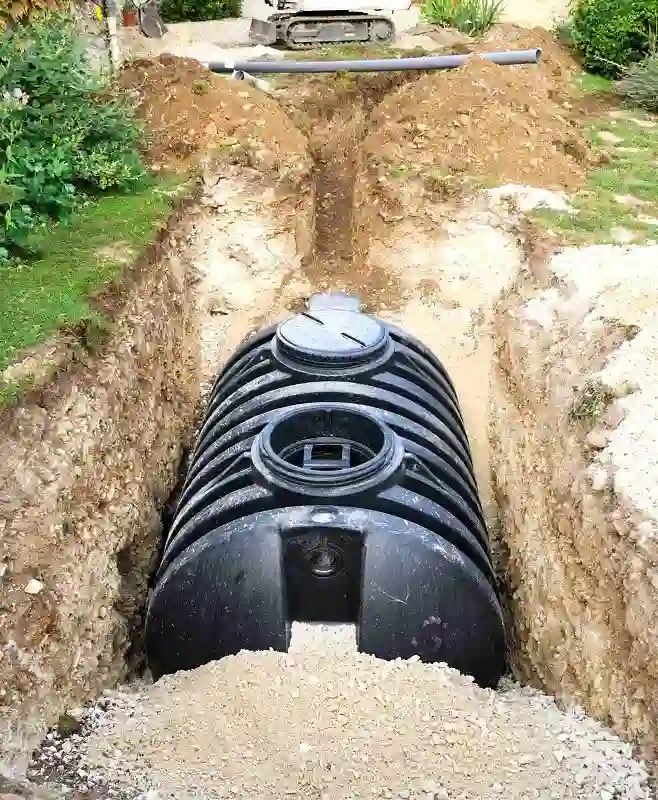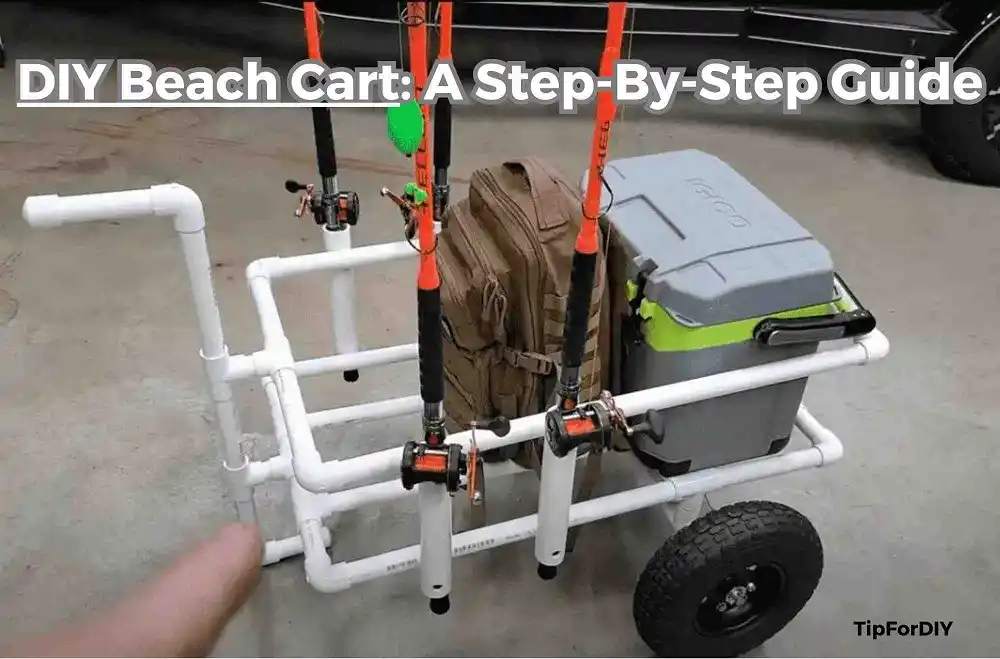
Imagine a stormy night, thunder roaring, and rain pouring down relentlessly. In times like these, having a safe space to hunker down becomes more precious than gold. What if we told you that your very own DIY septic tank storm shelter? Yes, you read that right! In this article, we’re diving into the world of repurposing and transforming your humble septic tank into a DIY storm shelter that could be your knight in shining armor when Mother Nature gets a bit too rowdy.
Table of Contents
- Understanding the Basics: What’s a Septic Tank, Anyway?
- The Whys and Hows of a DIY Septic Tank Storm Shelter
- Step by Step: From Septic to Shelter
- Safety Dance: Staying Secure and Prepared
- Stormy Challenges and How to Tame Them
- Legalese and You: Navigating the Red Tape
- Storm Shelter Success Stories
- Conclusion: Your Shelter, Your Way
- Additional Resources: Your DIY Guide
- FAQs
Understanding the Basics: What’s a Septic Tank, Anyway?
Before we jump into the whirlwind of creativity, let’s make sure we’re all on the same page. A septic tank is like your home’s private waste manager. It collects and treats the wastewater that comes from your toilets, sinks, and showers. You might not think much of it, but hold onto that thought – it’s going to play a starring role soon.
The Whys and Hows of a DIY Septic Tank Storm Shelter
You’re probably wondering, why in the world would you want to turn a septic tank into a storm shelter? Well, here’s the deal. Think about it: a storm shelter can be a pretty penny, and not everyone’s got a stash of cash ready for one. But fear not, that septic tank you’ve got buried in your backyard could be your ticket to safety without breaking the bank.
Converting your plastic septic tank into a storm shelter is a project that’s all about resourcefulness and innovation. When unexpected storms hit, you need a safe space where you can ride out the tempest without worry. Plus, with a little bit of DIY magic, you can save both your money and the environment by repurposing an existing structure.
Step by Step: From Septic to Shelter
Now, let’s roll up our sleeves and get into the nitty-gritty of turning your plastic septic tank into a haven from the storm.
Cleaning and Sanitization: Clearing the Decks
First things first, we need to give that septic tank a proper makeover. We’re talking gloves, masks, and scrubbing brushes. We need that tank sparkling clean before we even think about storm safety.
Begin by draining the tank and removing any leftover waste residue. This might not be the most glamorous part of the project, but it’s absolutely essential. Safety and hygiene come first, after all! Once the tank is emptied, it’s time for a thorough cleaning. Scrub away any grime and build-up, and don’t forget to sanitize every nook and cranny. You want your shelter to be clean and welcoming when you need it the most.
Reinforcement and Modifications: Safety First

A septic tank might not be built to withstand storms, but with a little elbow grease, we can change that. Time to add some reinforcements – think steel bars, concrete, and anything else that screams “tough.”
The key here is to strengthen the structure without compromising its integrity. You’re not just creating a shelter; you’re fortifying it against the elements. Consult with a structural engineer if needed, and consider reinforcing the walls and ceiling of the tank with sturdy materials. This step might require some heavy lifting, but the peace of mind it provides during a storm is more than worth it.
Let There Be Light and Air: Ventilation and Exit Strategy
A storm shelter without air is like a cake without frosting – it’s just not the same. We’re punching in some ventilation to keep that air flowing, and of course, we’re installing an emergency exit. Safety always comes first, remember?
Ventilation is crucial to ensure a continuous supply of fresh air inside the shelter. Without proper ventilation, the air inside could become stuffy and uncomfortable. Consider adding vents near the top of the shelter to allow hot air to escape and fresh air to circulate. As for the emergency exit, it’s a non-negotiable. This exit should be easy to open from the inside and lead to a safe area outside the shelter.
Cozy Comforts: Making it Feel Like Home
Now that we’ve got the safety part down, let’s talk comfort. Insulation and waterproofing are our best pals here. We’re turning that septic tank into a snug den where you can ride out the storm in style.
Insulation helps maintain a comfortable temperature inside the shelter, no matter how fierce the storm outside. You can use foam panels or other insulation materials to line the walls and ceiling. Additionally, waterproofing ensures that the shelter remains dry even during heavy rainfall. A waterproof membrane on the exterior and proper sealing around openings will keep you cozy and dry.
Safety Dance: Staying Secure and Prepared
Safety’s a dance, and you’re the lead. We’ve got a few tips to make sure your septic-turned-storm-shelter is always ready to tango.
Breathe Easy: Ventilation Matters
Good air makes for happy campers. Keep those vents clean and clear, so you can take deep breaths even when the weather outside is going bonkers.
Regular maintenance is essential to ensure that the ventilation system functions properly. Inspect the vents for debris, leaves, or any obstructions that might hinder the airflow. A quick sweep now and then can make a world of difference in maintaining a comfortable atmosphere inside the shelter.
Weathering the Storm: Waterproofing Wonders
The last thing you want is a leaky shelter. Waterproof that tank-turned-shelter like you’re prepping for a flood. Because, well, you never know.
Inspect the waterproofing elements of your shelter regularly. Look for any signs of damage, cracks, or wear and tear. It’s better to catch and fix minor issues early than to deal with water infiltration during a storm. Remember, a dry shelter is a comfortable shelter.
SOS: Staying Connected
Storms can be a bit chatty, and you need a way to join the conversation. Keep a charged phone, a radio, or any way to stay connected to the outside world. It’s your lifeline, after all.
Pack a portable charger and a battery-operated radio inside your shelter. These simple devices can keep you informed about weather updates and emergency broadcasts. Also, consider having a first aid kit, non-perishable food, and water stored in your shelter. You’re not just building a shelter; you’re building a safety sanctuary.
Stormy Challenges and How to Tame Them

Of course, nothing in life comes without a challenge or two. Let’s peek at what could throw a curveball and how to knock it out of the park.
Smell That? Dealing with Odors
We won’t sugarcoat it – septic tanks can sometimes carry a stench. But fear not, a bit of odor-fighting know-how can save the day.
To keep any potential odors at bay, ensure that your septic tank is well-maintained. Regularly scheduled septic tank cleanings and pump-outs as recommended by professionals. Also, consider using odor-neutralizing products specifically designed for septic systems. By addressing the root cause, you can enjoy a shelter experience free from unpleasant scents.
Hold Steady: Structural Strength
If you’re thinking your plastic septic tank might be a bit wobbly, you’re not alone. Reinforcements can turn that wobble into a sturdy shelter that’s not going anywhere.
Structural stability is paramount when it comes to your storm shelter. If you’re concerned about the sturdiness of your converted septic tank, consider consulting a structural engineer or a construction professional. They can provide guidance on how to reinforce the structure effectively. Reinforcement options might include adding additional support beams, reinforcing the walls with strong materials, or even embedding the tank into the ground for extra stability.
Legalese and You: Navigating the Red Tape
Before you go all Bob the Builder, make sure you’re not breaking any laws. Check local rules, get those permits lined up, and make sure your shelter is as legit as it gets.
Converting a septic tank into a storm shelter might require specific permits and approvals, depending on your local regulations. Before you dive into the project, do your due diligence. Contact your local building department or zoning office to understand the legal requirements. Obtaining the necessary permits ensures that your shelter is safe, compliant, and ready to stand up to any scrutiny.
Storm Shelter Success Stories
Still not convinced? Let’s take a peek at real-life tales where a septic tank turned into a shelter and saved the day. These stories are bound to make you see that plastic tank in a whole new light.
In Smallville, a community hit by a surprise storm, a family’s DIY septic tank storm shelter proved to be a game-changer. While neighbors scrambled for cover, this family had a secure and comfortable space to ride out the storm’s fury. Thanks to their resourcefulness, they not only stayed safe but also became a beacon of inspiration for the entire neighborhood.
Conclusion: Your Shelter, Your Way
So there you have it, folks. Who would’ve thought your septic tank could be your ultimate storm sanctuary? Remember, storms might rage outside, but inside your shelter, it’s nothing but cozy calm.
Ready to ride out the storm in style? Go ahead, transform that plastic septic tank into a haven that’s uniquely yours. Safety meets resourcefulness, all in one unexpected package.
Additional Resources: Your DIY Guide
Feeling inspired? Check out these resources to guide you through the septic-to-shelter transformation:
- Video Tutorial: Reinforcing Your Septic Tank Shelter
- Permits and Legal Guidelines for DIY Storm Shelters
Remember, folks, safety’s the name of the game. Get creative, get safe, and weather those storms like the pro you are!
FAQs
Q1: Can I really use a plastic septic tank as a storm shelter?
Absolutely! With proper modifications and reinforcements, a plastic septic tank can be transformed into a reliable storm shelter. Just ensure you follow safety guidelines and local regulations.
Q2: How can I maintain my DIY storm shelter?
Regular maintenance is key. Keep vents clear, inspect for leaks, and periodically sanitize the shelter. Also, don’t forget to refresh your emergency supplies.
Q3: Will I need professional help for this project?
While many aspects can be done DIY, consulting professionals like structural engineers and building authorities is advisable to ensure safety and compliance.
Q4: What should I do if I smell odors from the septic tank?
Regular septic tank maintenance and cleaning can prevent odors. Consult professionals if odors persist, as they might indicate issues that need attention.
Q5: Can I customize my shelter’s design?
Absolutely! The beauty of a DIY project is that you can make it uniquely yours. Customize the design, amenities, and layout to match your preferences and needs.



